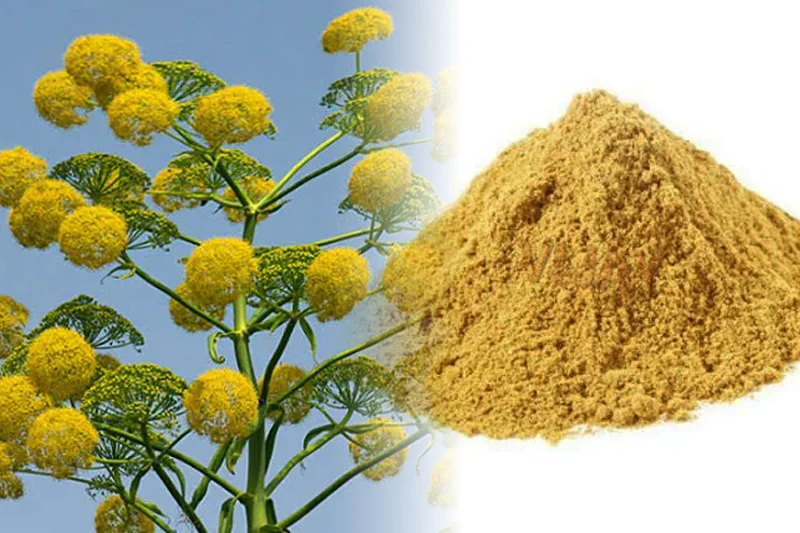Vivid, potent, and lingering — these are the words that come to mind when one thinks of asafoetida, or ‘Hing’ as it is known in India. The spice holds a mystique that equally intimidates and excites those who encounter it in the realm of Indian cuisine. But beyond the palettes Hing delights—or fiercely divides—lies an intricate process that brings this unique spice from the earth to our tables. Join us as we dig deeper into the terrains where asafoetida thrives, the global marketplace it fuels, and the quality compass that guides the hunt for the best Hing.
Cultivation of Asafoetida
Historic Harvests and Cultural Climates
From the earliest civilizations to the bustling markets of modern-day India, asafoetida has been a staple in many cultures. Its highly esteemed status, however, did not come easily. Indigenous to the deserts of Iran and mountain ranges of Afghanistan, the herb’s residency in these rocky, unforgiving terrains invoked an intriguingly pungent profile that couldn’t be imitated elsewhere. It found its true home in the arid plains and high-altitude valleys of India, becoming integral to the ecosystem and economy of these regions.
Nourishing the Soil: Growing Regions in India
India’s distinct growing regions, from the harsh terrains of the Western Ghats to the fertile valleys of Kashmir and the hot plains of Punjab, have nurtured asafoetida with conditions as varied as the disharmonious flavors it so effectively marries together. The plant, Ferula assa-foetida, thrives in altitudes upwards of 4,000 feet, with well-drained sandy or rocky soils underpinning its cultivation. What was once a seasonal labor, relegating the collection to the monsoon months, has seen a metamorphosis into year-round production through the use of modern horticultural practices.
Tradition Meets Technology: Cultivation Evolution
Long before mechanization and synthetic fertilizers, asafoetida was a craft, not just a commodity. The gum or resin, believed to possess medicinal qualities, was harvested by scoring the fleshy root and collecting the oozing juices, a technique passed down through generations. Today, this traditional art meets modernity, especially in the semi-arid Kutch region of Gujarat, the heartland of indigenous Hing cultivation. Here, old methods endure, intertwining with newer agricultural techniques to ensure higher yields and better quality through careful irrigation, mineral supplementation, and pest management.
Importing Asafoetida
Global Aromas: Countries that Import Hing
The distinctive bouquet of asafoetida has transcended borders, with various countries importing it to infuse their cuisines with its unique essence. The Middle East, Europe, and the Americas have all become significant consumers of Hing, with Indian diasporas ensuring its ubiquity in international markets. The United Arab Emirates, Canada, and the United States are among the largest importers, procuring vast quantities to meet the demand in their culinary landscapes.
Quality over Quantity: Certification and Standards
In a global market teeming with spices, asafoetida stands as an exemplar of quality control. The spice industry, cognizant of maintaining the high standards expected by consumers, has implemented stringent measures to ensure that only the best Hing finds its way onto shelves. Certifications such as the Food Safety and Standards Authority of India (FSSAI) mark a product’s quality, while international standards adopted by importers guarantee that the asafoetida reaching their shores meets their criteria.
Earth-Friendly Exportation: Sustainability in the Hing Industry
With increased scrutiny on the environmental impact of agricultural practices, the trade of asafoetida too is under the microscope. In response, the industry is steering towards sustainable sourcing. Projects that promote organic farming methods, conserve water, and use energy-efficient manufacturing processes are not just noble outliers but the beginning of a broader movement. The focus on sustainability isn’t just restricted to the cultivation and harvesting of asafoetida; it extends to the packaging and transportation, with eco-friendly options gaining traction among suppliers.
Quality Assessment of Asafoetida
The Quest for the Best Hing
The best Hing is more than just a commodity; it’s a culture, a tradition, and a marker of excellence. While personal preferences and regional variations play a role in defining quality, there are universal hallmarks that distinguish superior asafoetida. A rich, resinous texture, a deep amber hue, and a complex aroma that avoids the extremes of being too acrid or too mild are classic attributes of high-grade Hing.
Grading Hing: Formalizing the Aroma
To streamline the assessment of asafoetida, grading systems have been put in place. The Food Safety and Standards Authority of India (FSSAI) categorizes Hing into four grades, based on its volatile oil content and its organoleptic characteristics. This formalization ensures that consumers and producers are on the same page, speaking the common language of quality.
Shopping for Hing: A Consumer’s Guide
For the uninitiated, the spice aisle can be a labyrinth of choices. When it comes to Hing, a discerning eye and a nose for quality are your best guides. Look for reputable brands that adhere to industry standards and source their asafoetida responsibly. Trust your senses — the aroma should be pronounced but not overwhelming, the texture should be sticky but not slimy, and the color should be a deep, earthy red. Consider shopping at specialty stores that cater to Indian cuisine, where the turnover is higher, and the products are fresher.
Conclusion
Throughout history, asafoetida has been an indispensable ally to incendiary curries and fragrant biryanis. But beyond its culinary utility lies a tale of resilience, adaptability, and the unyielding quest for quality. From ancient harvests to modern environmentalism, the story of Hing is as rich and complex as its flavor. And as consumers, we hold the key to its future — in the quality we demand, the standards we uphold, and the customs we preserve. May this exploration of asafoetida encourage you to not only savor its powerful nuances but to appreciate the heritage and craft that gives it life.

